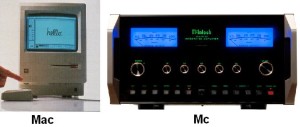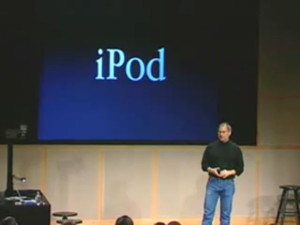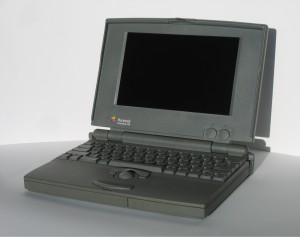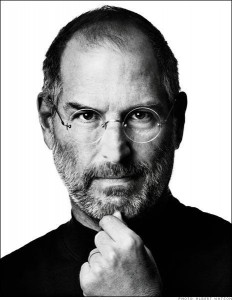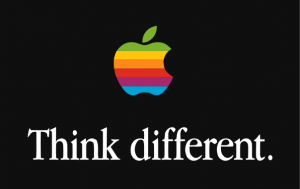Apple
Apple Sues over QuickTime
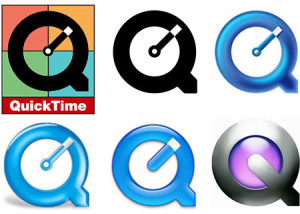
Apple sues the San Francisco Canyon Company alleging they helped Intel and Microsoft steal code developed under contract for QuickTime for Windows.
Apple first released QuickTime for the Macintosh in December 1991 and then contracted the San Francisco Canyon Company to port QuickTime to Windows in 1992. Microsoft’s competing Video for Windows technology was not as advanced as Apple’s QuickTime, even when it came out a year after QuickTime. In 1993, Intel hired the San Francisco Canyon Company to help them optimize their own video technology. Later in 1993 Intel and Microsoft combined their efforts to improve Video for Windows, releasing a version that was significantly improved and roughly matched the quality of QuickTime. Apple discovered that code developed by the San Francisco Canyon Company for QuickTime was also present in the improved version of Video for Windows and sued the San Francisco Canyon Company in 1994. In 1995 Apple expanded the lawsuit to include Intel and Microsoft, claiming that the companies knowingly used the San Francisco Canyon Company to help them steal the QuickTime code. It was later revealed that Apple was threatening Microsoft with a multi-billion dollar lawsuit, that was famously settled by Steve Jobs and Bill Gates in 1997. This settlement is now believed to have helped Apple survive long enough to transform themselves in the 2000’s, ushering in the mobile device revolution and The New World of Technology.
Apple Releases QuickTime
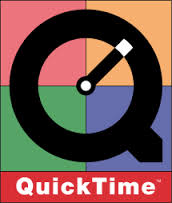
Apple releases version 1.0 of QuickTime, a multimedia extension for playing color video, transforming the capabilities of personal computers. Before QuickTime, only specialized computers could play color video. QuickTime allowed anyone with a personal computer to do so and it changed the history of computing – in more ways than one. It was the patent infringement battle over QuickTime that led to the now-famous truce between Steve Jobs and Bill Gates in 1997 that helped Apple survive long enough to transform itself in the 2000’s.
Steve Jobs Writes a Letter
November 16, 1982
Steve Jobs writes a letter to McIntosh Labs asking for rights to use “Macintosh” as the brand name of Apple’s still-in-development computer. McIntosh Labs makes high-end stereo equipment, and while Jef Raskin, creator of the Macintosh project, intentionally spelled the name with a letter “a” to differentiate Apple’s computer from McIntosh’s audio products, Apple was denied a trademark because the name was phonetically identical. Since the Macintosh team had become attached to the name, Steve Jobs wrote the letter hoping to get permission or a licensing arrangement. Gordon Gow, president of McIntosh Labs visited Apple headquarters for a product demonstration after receiving the letter. However, McIntosh lawyers advised Gow to rejected the request. It wasn’t until March of 1983 that Apple secured a license for the name Macintosh. In 1986 Apple wholly acquired the trademark for an undisclosed “substantial” amount of money.
The Day the Music Was Reborn
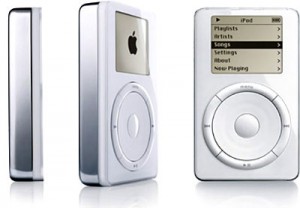
Apple ships the first iPod, the device that changed the course of both the music and technology industries. Of course, at the time, most “experts” could only focus on the fact that other devices cost less and may have had more impressive technical specs. Sort of like they do today. I guess when it comes to “experts” and Apple devices, they haven’t learned their lesson yet!
1000 Songs in Your Pocket
Using the slogan, “1000 Songs in Your Pocket,” Steve Jobs introduces the original iPod, featuring a 5 GB hard drive, Firewire connectivity, and synchronization to iTunes. By using a 1.8″ drive, the iPod was significantly smaller than competing MP3 players of the time. The Firewire port allowed simultaneous charging and high-speed music synchronization, innovative for its time. At the time, the original iPod only worked with Macintosh computers. However, the popularity of the iPod among Windows users – who had to hack together a solution to use it with their computers – prompted Apple to release a Windows compatible version in the second generation of iPods. With the introduction of the iTunes Music Store in June of 2003, the runaway success of the iPod completely changed the landscape of the music and computer industry.
Apple Introduces PowerBook
At the COMDEX computer expo in Las Vegas, Apple introduces the first line of PowerBook notebook computers, the PowerBook 100, PowerBook 140, and PowerBook 170. The first truly portable Macintosh, the PowerBook line redefined portable computing and set the bar for future laptop designs. For example, the PowerBooks were the first laptop to have a trackball positioned in front of the keyboard. Most existing PC laptops of the time ran DOS and were therefore keyboard-oriented, requiring the use of external mice.
Steve Jobs Passes Away
After a long battle with pancreatic cancer, technology visionary and founder of Apple Computer, Steve Jobs passes away. Jobs’ contributions to the technology industry are undeniable. Together with Steve Wozniak, Steve Jobs started the personal computer revolution with their Apple II computer. After being forced out of Apple, Jobs went on to found NeXT, Inc. and then purchase Pixar, the company that would redefine the animated motion picture industry. In 1997, Apple purchased NeXT which brought Jobs back to Apple and the technology developed at NeXT was used as the foundation for Apple’s future operating systems, Mac OS X and iOS. By introducing the iPhone and iPad, he ended the PC era he created, kickstarted The New World of Technology and led Apple from the brink of collapse to the most valuable company in the world.
Apple Asks Us to Think Different
Just a little over two weeks after naming Steve Jobs interim CEO, Apple launches their “Think Different” ad campaign. Designed to reintroduce the Apple brand, the campaign was nearly universally praised by the press, general public, and advertising industry, winning several awards along the way. Looking back in context, Think Different was the symbolic start of Apple’s resurgence from near-collapse in the 1990’s into the most valuable company in the world.
The campaign was anchored on the now-famous prose commonly called, “Crazy Ones“, which was narrated by Richard Dreyfus in the commercial most people are familiar with. It is commonly thought that Steve Jobs wrote Crazy Ones, but in fact it was written by Rob Siltanen and Ken Segall who worked at Apple’s advertising agency, TBWA/Chiat/Day. Read more about the history of the Think Different campaign.
Here’s to the crazy ones. The misfits. The rebels. The troublemakers. The round pegs in the square holes. The ones who see things differently. They’re not fond of rules and they have no respect for the status quo. You can quote them, disagree with them, glorify or vilify them. About the only thing you can’t do is ignore them. Because they change things. They push the human race forward. And while some may see them as the crazy ones, we see genius. Because the people who are crazy enough to think they can change the world are the ones who do.
Steve Jobs Named Interim CEO of Apple
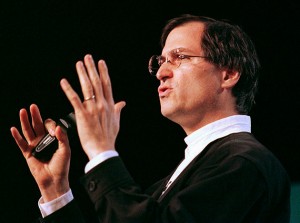
Twelve years to the day after resigning from Apple, Steve Jobs is named Interim CEO of Apple. Only seven months earlier, Jobs’ company NeXT was purchased by Apple and just two months earlier Gil Amelio resigned as Apple CEO. Much of the technology acquired with the purchase of NeXT was used to build the Mac OS X operating system, which became the core of the iOS operating system that runs the iPhone and iPad.
Steve Jobs Resigns from Apple
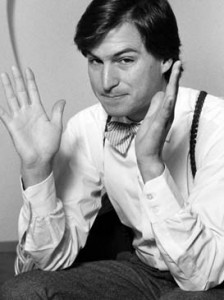
Five months after losing control of the company in a boardroom battle with John Sculley, Steve Jobs resigns from Apple. Jobs goes on to found NeXT and purchase Pixar before eventually returning to Apple.

